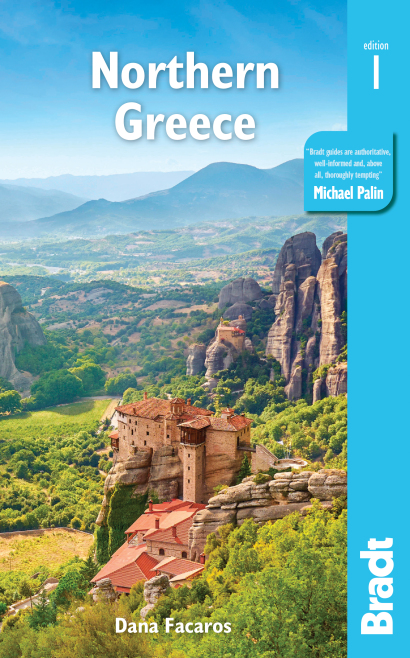Samothráki, or Samothrace, is a land of lingering magic, of cliffs, nightingales, plane forests and waterfalls. Sweeping around the Aegean’s highest summit, Mount Fengári, the island also has its place in Greek legend – it is said that Poseidon sat atop the mountain to watch the Trojan War.
Often wind-whipped, and lacking a natural harbour, Samothráki was nevertheless one of the most-visited islands of antiquity, thanks to its sanctuary of the Cabeiri, the Great Gods of the Underworld. Today its natural beauty and ‘mystical energy’ make it the perfect destination for those seeking a Greek getaway, and, better yet, one that is away from the crowds.
A potted history of Samothráki
Once densely populated, Samothráki owes its importance to its position near the Dardanelles – the strait named after the legendary Samothracian Dardanos, founder of Troy; its oldest shrine (the rock altar beneath the Arsinoëion) goes back, according to Herodotus, to the pre-Indo-European Pelasgians – a period seemingly confirmed by recent excavations at Mikró Vouní on the island’s southwest coast.
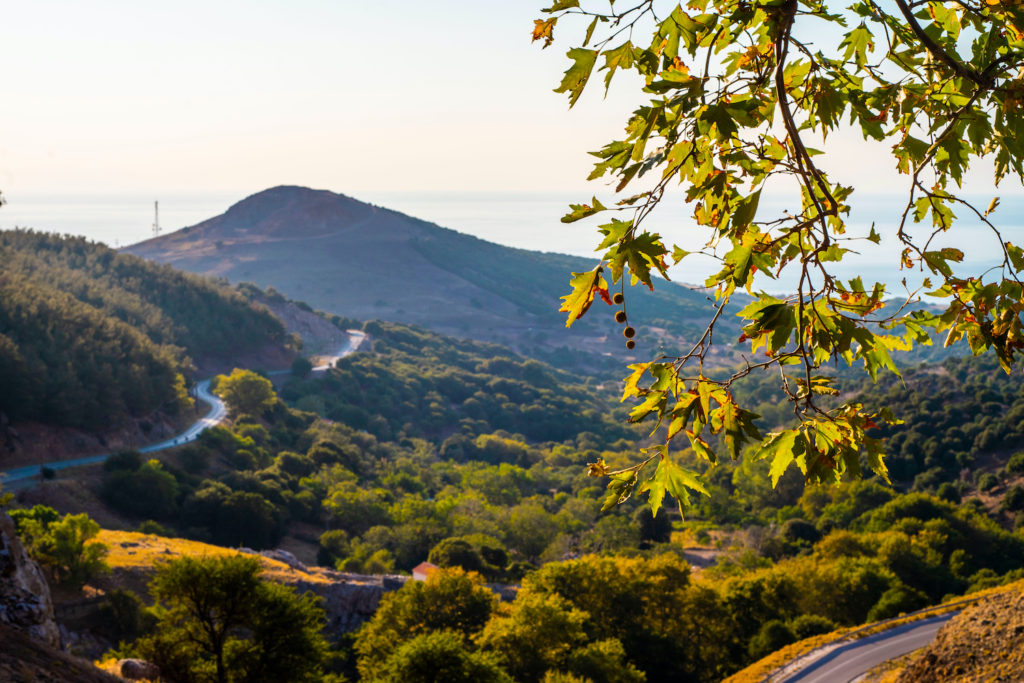
By the mid 5th century BC, Samothráki’s sanctuary was the religious centre of the North Aegean, attracting a steady stream of initiates, including Hellenistic and Roman rulers (notably the Ptolemys of Egypt) who also used Samothráki as a naval base, relying on its sacred soil for protection. St Paul stopped by in AD49, but failed to impress the locals, who kept their sanctuary running until the AD390s, when Emperor Theodosius ordered the closing of temples.
Without its sacred status, Samothráki itself was forgotten. Pirates forced the remaining inhabitants to the hills. In the mid 14th century, Emperor John V Palaiologos gave the island to the Gattilusi family of Genoa in exchange for their assistance in helping him obtain the imperial throne of Byzantium. Afterwards it was ruled by the Turks, the Venetians, the Turks again (who razed much of it in 1821) and the Bulgarians, until it joined Greece in 1912.
What to see and do on Samothráki
Kamariótissa
Samothráki’s workaday port, Kamariótissa, is a simple place with an exposed rocky beach and an aeolian windmill park by a small lagoon.
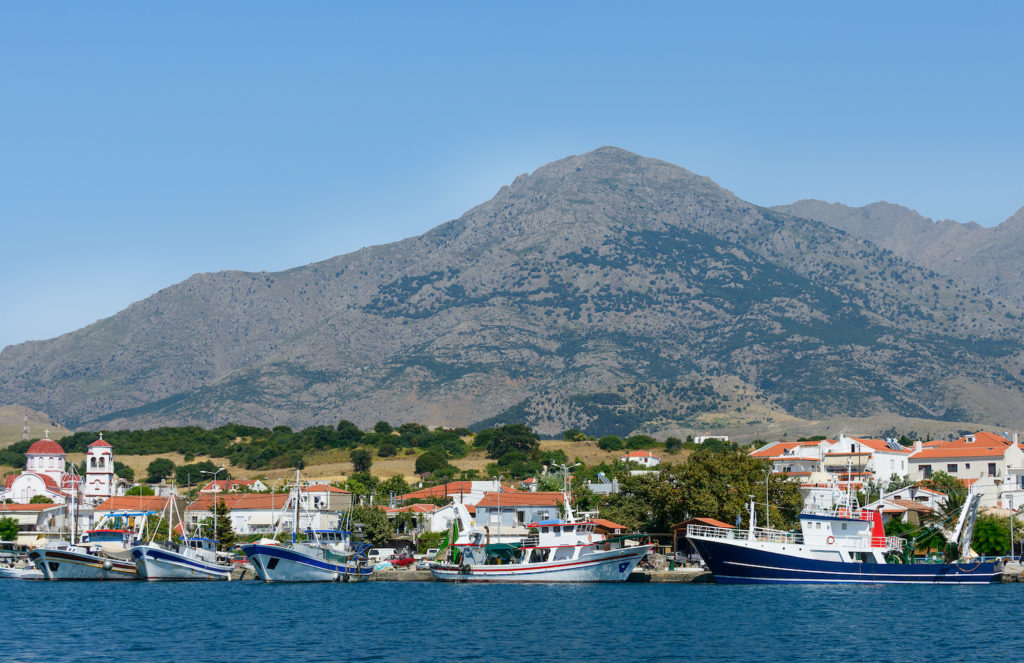
A farm road leads in 2½ km to the fertile plain of Livádi and the archaeological site of Mikró Vouní, a proto-urban community of around 500 that survived until circa. 1700BC, and was apparently a stop on the trade route of metals between the Minoans of Crete and the Black Sea; finds include a number of Minoan clay tablets in Linear A, dating to the 19th or 18th century BC – the first to have been found this far north.
Chóra
Above Kamariótissa, Chóra or Samothráki Town, where most of the island’s souls live, occupies a picturesque amphitheatre below the castle built in 1433 ‘by the glorious Palamedes Gattilusi’ (as the proud marble inscription says, with its single- and double-headed eagles) who kept it for 20 years before it was captured by the Turks.
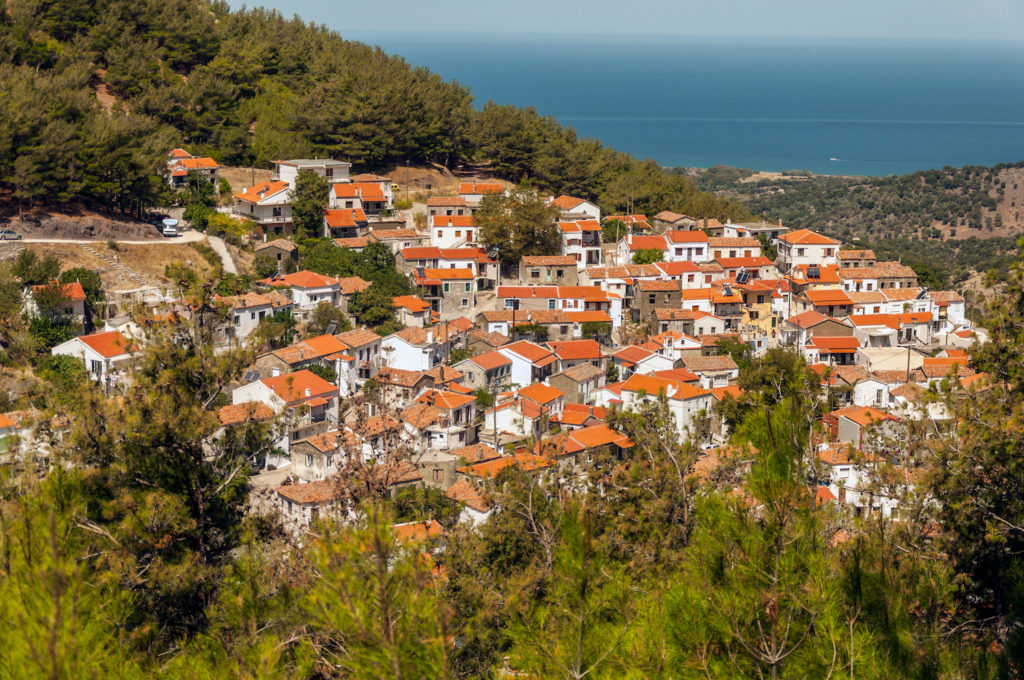
Chóra has whitewashed houses with red-tiled roofs, a charming century-old bakery (famous for its bread kneaded five times), five mummified heads (of martyrs killed by the Turks for reconverting, up in the church) and an interesting little Folklore Museum with house furnishings, traditional costumes, textiles, embroideries, tools, photos and icons. At the entrance to Chóra stands a modern winged statue of Nike (Victory), not quite as grand as the one it lost to the Louvre but a dead ringer for Olympic gymnast Nadia Comăneci.
Hillside hamlets
Pretty agricultural hamlets dot the slopes of southern Samothráki: Alónia, has ruins of a Roman bath, while hilltop Profítis Ilías is famous for tavernas serving semi-wild kid, the island’s speciality. From delightful Lákoma it’s a windy 8km to the turn-off for the church of Panagía Kremniótissa, tottering on rocks and taking in huge views as far as the Turkish island of Imbros. Below lies the island’s only sandy beach, Pachiá Ámmos, with a taverna.
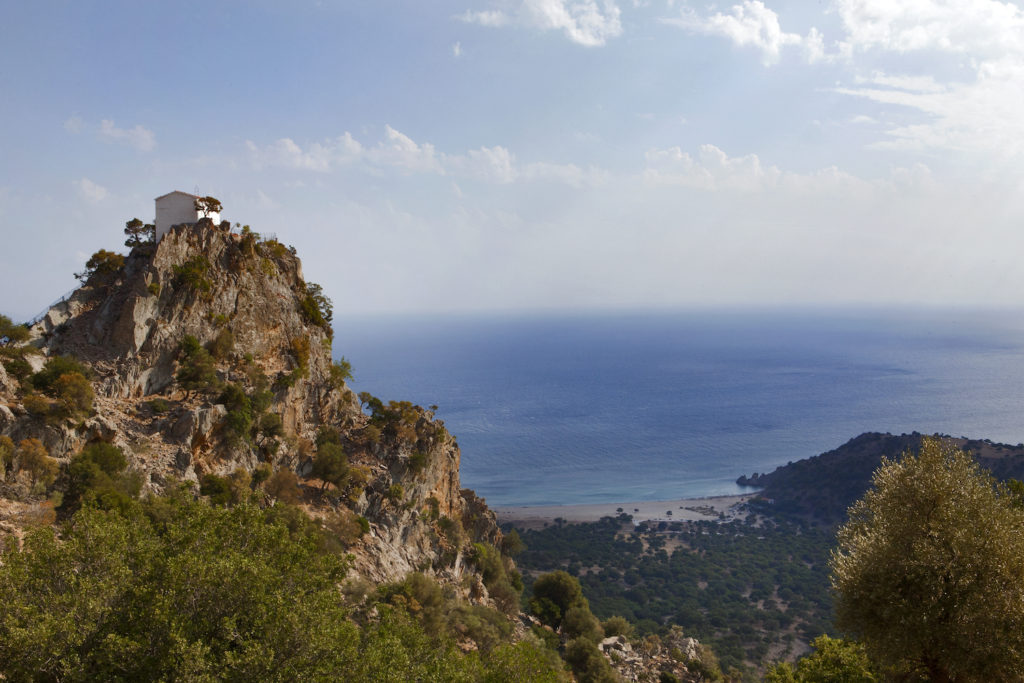
A boat excursion is the only way to visit the spectacularly rugged southern coast east of Pachía Ámmos, where you’ll find Krémasto Neró (‘hanging water’), a 180m waterfall, reputedly the highest in Greece and the only one in Europe outside of Greenland that spills directly into the sea.
Sanctuary of the Great Gods of the Underworld
The sanctuary, set in trees overlooking the sea, enjoys an idyllic setting, while goat bells tinkle on the mountain above. Everyone who was anyone (Alexander the Great’s parents met here) came to be initiated in the Mysteries, but no one knows what really went on: death awaited anyone who blabbed. The first large structure you come across, the rectangular Anaktoron (House of the Lords), dates from the 6th century BC and was rebuilt twice, lastly by the Romans. First-level initiations were held here, but only the initiated, or mystai, were allowed in its inner holy of holies on the north side.
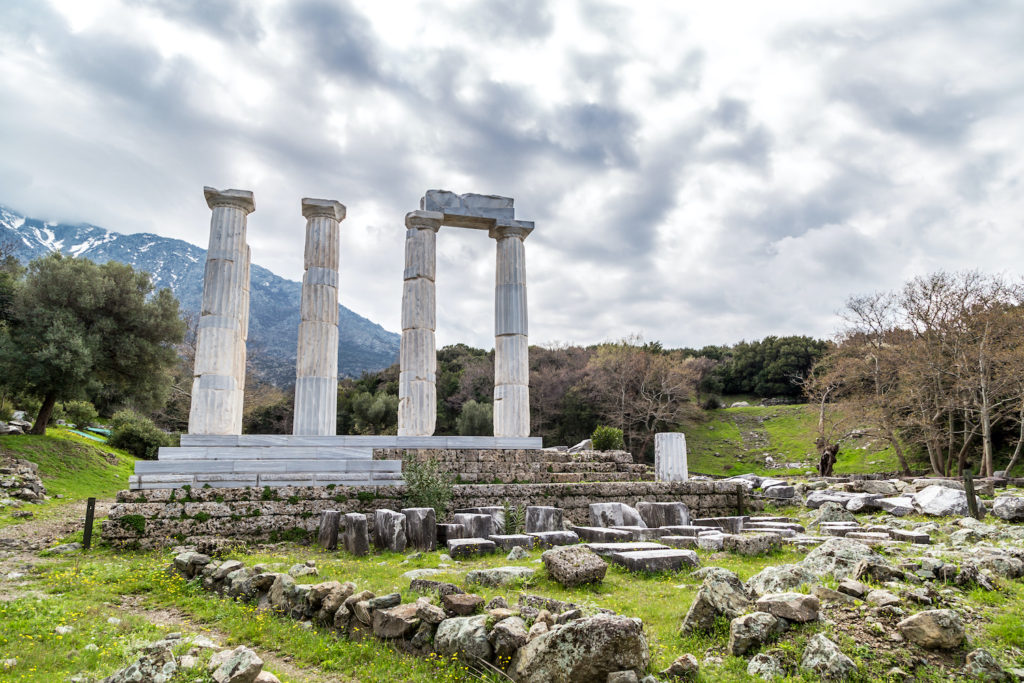
Adjacent, by the Sacred Rock, is the Arsinoëion, at 20m in diameter the largest circular or tholos structure ever built by the ancient Greeks. It was dedicated in 280BC by Queen Arsinoë II, wife and sister of Ptolemy Philadelphos of Egypt. It had one door and no windows; no-one knows quite what went on there.
Adjacent stand the five re-erected Doric columns of the Hieron, or ‘New Temple’, where the upper level of initiation or epopteia was held; it dates from 300BC and was last restored after an earthquake in the 3rd century AD. The Hieron’s interior – 11m wide – was another ancient Greek record breaker, as the largest unsupported span. The apse to the south was the business end – the chthonic holy of holies. There are scant remains of a larger theatre and buildings where votive gifts were brought.
Thermá
From the sanctuary, the road continues east to Thermá. Like much of this idyllic corner of Samothráki, it is immersed in chestnut and plane trees. It has a small marina and a delightful rustic spa where you can soak in mildly radioactive warm water. It’s good for arthritis and gynaecological disorders.
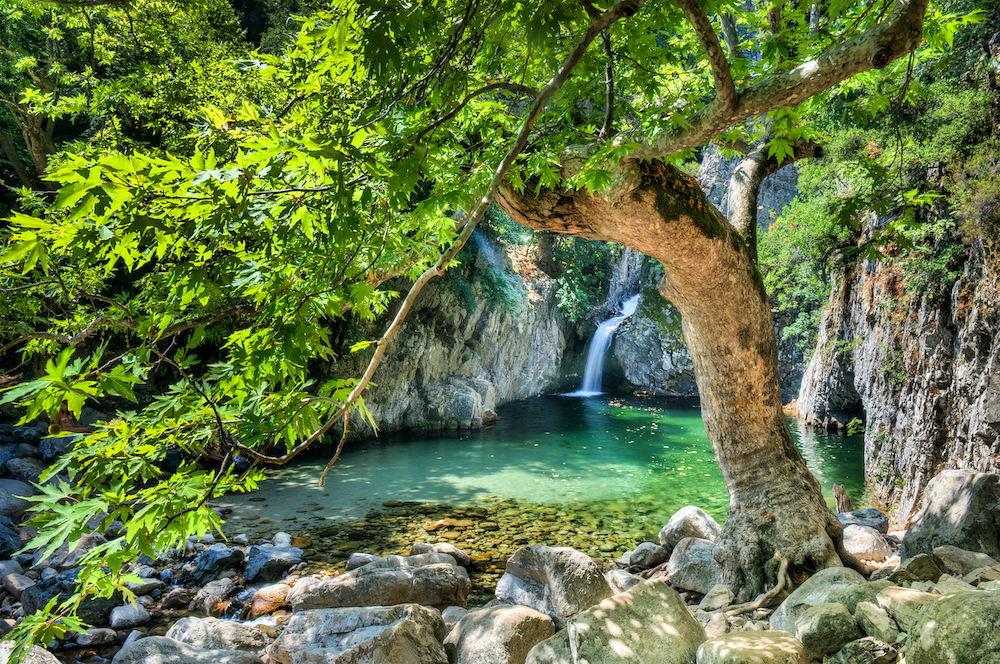
Follow the signs to the path to Griá Váthra – a short walk through a canopy of ancient trees takes you to a natural pool and little waterfalls that flow even in the scorching days of summer and where you almost expect to see a nymph in the dappled shade.
Mount Fengári
It’s possible to walk from Thermá to the rocky ridge of Mount Fengári’s summit (1,664m). This is a walk of medium difficulty, but more exhausting than climbing Olympus because you’ll be doing the 1,664m all at once. There are no shelters and only one very dribbling spring to replenish water bottles. Allow 11–12 hours there and back. And check the weather forecast: lightning strikes are common.
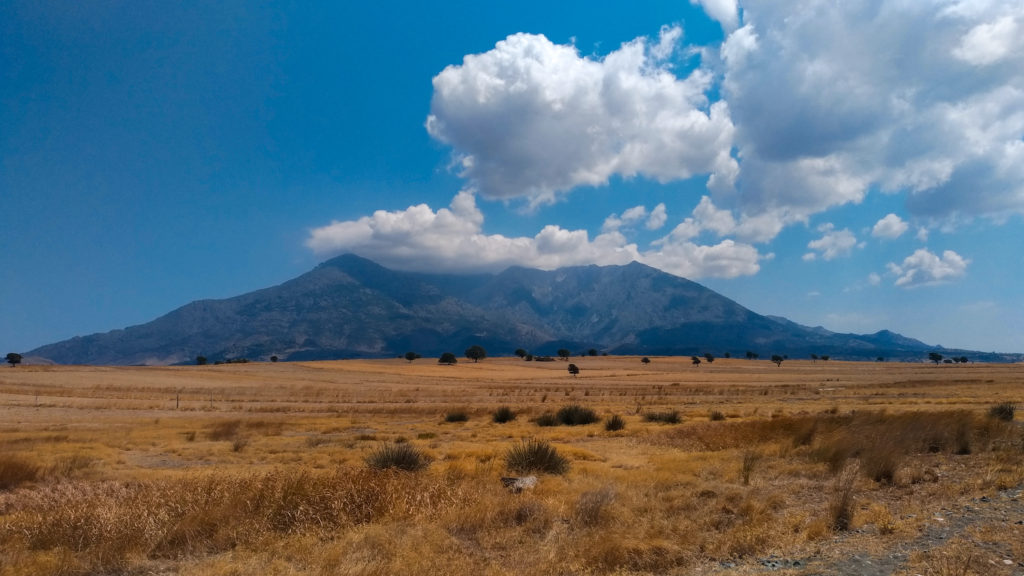
If you make it to the top, you can enjoy the same view as Poseidon, a stunning panorama of the North Aegean with views of Mount Athos to the west. Because of its altitude, Mount Fengári hosts a number of rare endemic plants: Alyssum degenianum, Symphyandra samothracica, Herniaria degenii and Potentilla geoides. The mountain’s ancient name, Sáos, recalls the Saoi, ‘the rescued ones’, a secret society of men sworn into the mysteries of the Great Gods.
Foniá
The medieval ‘Killer’ Tower, built by the Genoese, sits in the little delta of the Foniás River, which flows all year round. There’s a beautiful 30-minute path up its ravine to an enchanting waterfall, where you can take a dip in the vathrá (pool).
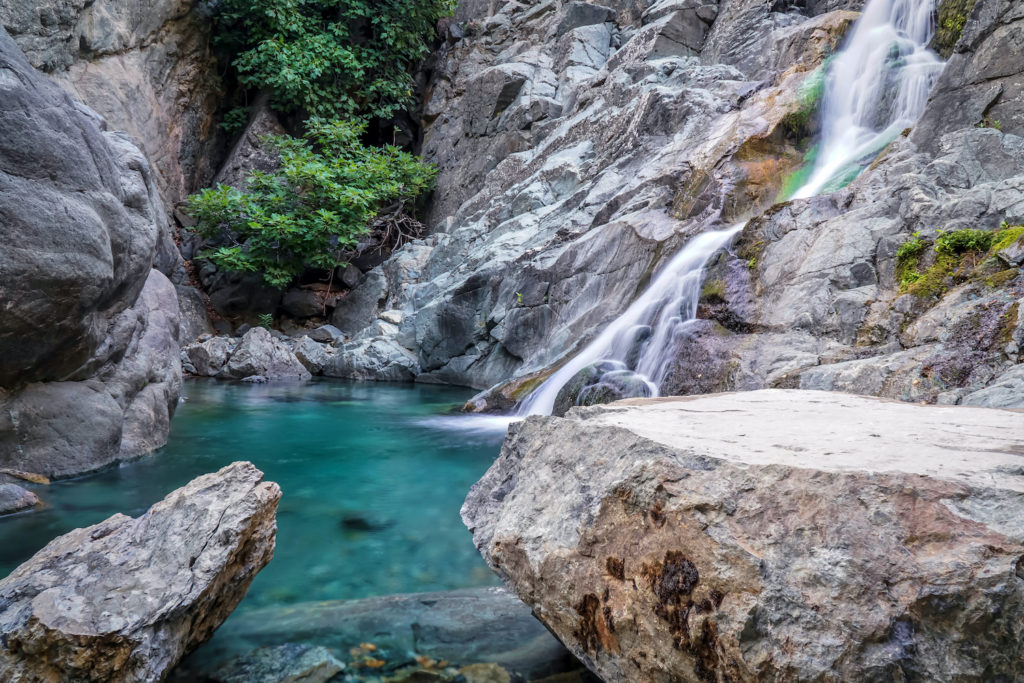
There are numerous other pools and falls further up, although as you climb higher it can get slippery; the highest waterfall, the 35m Kleídosi is a 2-hour hike from Foniá. After this oasis, the road continues to the long black pebble beach at Kýpos with crystal-clear water for snorkellers, a small café and where clothes are optional at the far end.
Getting to Samothráki
SAOS ferries make the 2-hour journey from Alexandroúpolis at least once a day (subsidised routes: €10 passengers, €39.20 cars; non-subsidised: €15.90 passengers, €58.50 cars). Book online, and well in advance, for July and August.
Once on the island, the sole petrol station can be found on the road to Chóra. In season, hire cars are in short supply: try Alfa, Kirkos or Niki, all in Kamariótissa.
More information
Eager to explore Samothráki and more of Northern Greece? Check out our comprehensive guide to the region:
